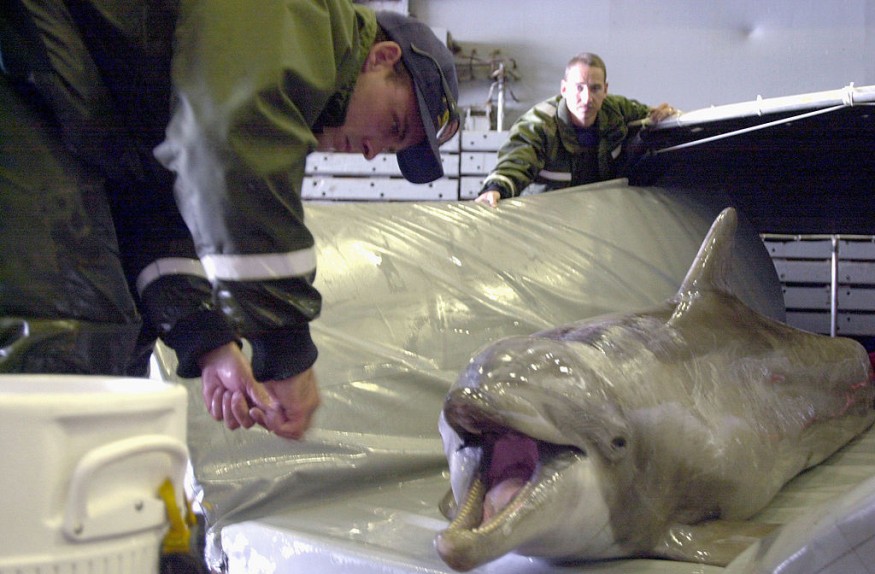In 2022, the US Navy attached cameras to its dolphins for scientific research and to assist in identifying sea mines for safeguarding American nuclear supplies. They were subsequently permitted to hunt in San Diego Bay without restriction.
According to Science Alert, the initial recordings from the viewpoint of uncontrolled dolphins hunting in North America's coastal waters contain a humming sound made by clicks and joyful noises expressing triumph.

Dolphins' POV Reveal Chaotic Insights on How They Hunt
A group of bottlenose dolphins from the US National Marine Mammal Foundation (NMMF) were fitted with cameras that captured six months of footage and audio recordings, allowing researchers to learn more about their hunting strategies and communication tactics.
The cameras were placed on their backs and sides, showing unusual angles of their eyes and mouths. Although these dolphins were not in the wild, they were given opportunities to hunt in the open sea to supplement their regular diet of frozen fish. As a result, the experts believe that they use similar techniques to their wild counterparts.
In their 2022 paper, titled "Sights and sounds dolphins, Tursiops truncatus Preying on Native Fish of San Diego Bay and Offshore in the Pacific Ocean" published in PLOS One, NMMF marine mammal veterinarian Sam Ridgway and his team wrote that the dolphins clicked at regular intervals of 20 to 50 milliseconds while hunting, with click intervals shortening to a terminal buzz and squeal as they approached their prey.
Once in contact with the fish, the buzzing and squealing continued until after it was swallowed. The footage also captured the sounds of the dolphins' hearts as they hunted and swallowed their prey. The findings suggest that these mammals have a complex system of communication and hunting strategies.
The dolphins have been caught on camera snacking on venomous sea snakes and suctioning up fish using their impressively strong throat muscles. The marine mammals also used suction to draw prey into the expanded space in their mouths and swallowed them whole rather than ramming it down using their rostrums.
Footage May Only Reveal Captive Dolphin's Behavior
Despite the informative footage the US Navy got, they acknowledge that some of the dolphins' findings may be due to their captivity. For example, the dolphins' consumption of venomous sea snakes could indicate that their lack of experience feeding in dolphin groups in the wild has led to unusual feeding behavior.
As IFL Science reported, the study's dolphins may not fully reflect the behavior of their wild counterparts despite having similar diets. Nonetheless, the researchers are confident that their method can be modified to be used in studying wild dolphins as well.
NMMF researchers believe that their discoveries could ultimately help conservationists better understand how wild dolphins behave in their natural habitats. By replicating the experiments on wild dolphins, they hope to build up a more complete picture of dolphin behavior and to understand the ecological impact that these animals have.
RELATED ARTICLE: Dolphins Control Their Heart Rates to Avoid Decompression Sickness
Check out more news and information on Dolphins in Science Times.
© 2025 ScienceTimes.com All rights reserved. Do not reproduce without permission. The window to the world of Science Times.












